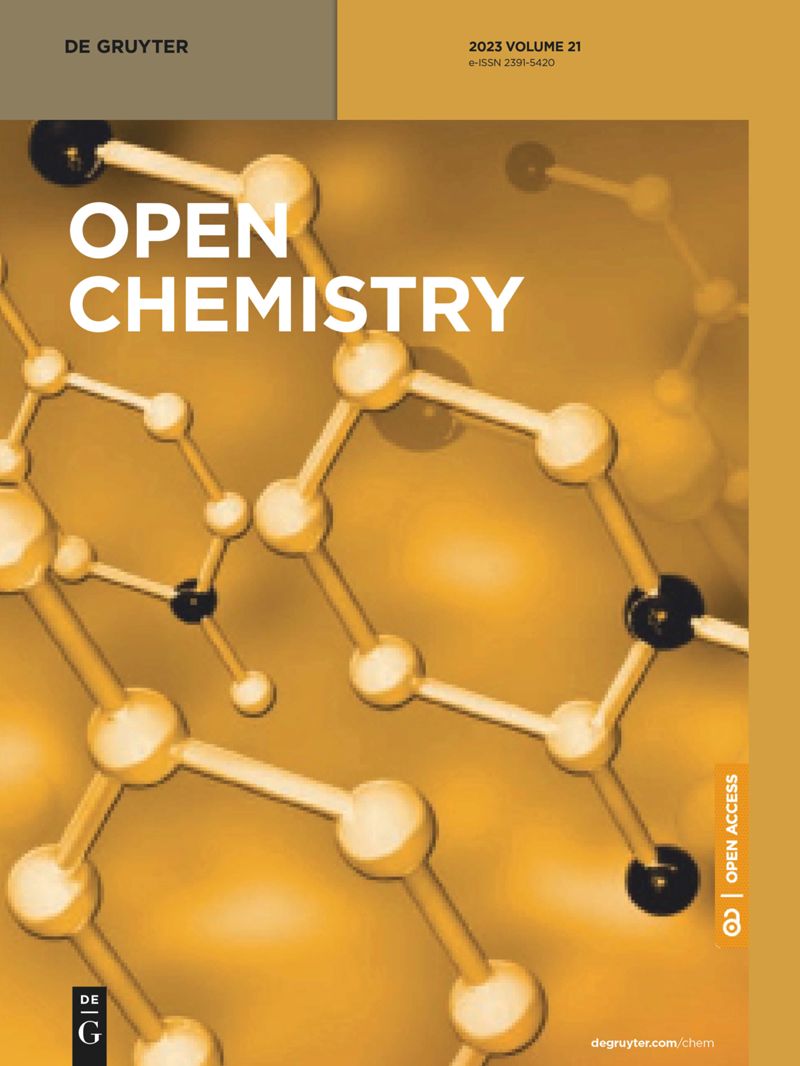通过植物化学物质对鱼腥草素辅助人工智能药物设计靶向上皮瘤的毒性比较评估
IF 1.9
4区 化学
Q3 CHEMISTRY, MULTIDISCIPLINARY
引用次数: 0
摘要
上睑下垂瘤是由于致病蛋白 Patched 1(PTCH1)功能失调而导致的良性肿瘤,手术干预可减轻其致命影响。然而,这些手术通常会导致巩膜变薄和角膜散光等并发症。由于缺乏有效的医疗手段,因此亟需新的方法来预防这种疾病的传播。这项研究不仅填补了上睑皮样瘤医学治疗方面的一个关键空白,还展示了人工智能在药物开发方面的变革潜力。利用人工智能药物设计服务,菲赛汀公司设计出了三种靶向 PTCH1 蛋白的高效全新治疗化合物。该方法包括从 NCBI 获取 PTCH1 蛋白序列,用 Expasy Protparam 计算理化参数,并用 SWISS-MODEL 估算三维结构。质量评估、结合位点预测、使用 WADDAICA 进行药物设计、利平斯基 5 项法则、毒性筛选、ADMET 评估、使用 CB-dock 和 Patch dock 进行对接分析,以及使用 IMOD 进行 MD 模拟,所有这些工作共同为开发和验证人工智能设计的表皮瘤植物化学药物提供了充分的依据。全面的药代动力学和毒性评估表明,人工智能设计的鱼腥草素在血脑屏障中具有出色的吸收能力,强调了其无毒性。人工智能设计的鱼腥草素与 PTCH1 蛋白的对接亲和力约为 -9.2 kcal/mol,显示了其作为药物的潜力。硅学研究结果表明其高效性和安全性,但要验证这些有前景的研究结果,还需要进行体内试验。这项研究提出了一种非侵入性的上睑皮样瘤解决方案,解决了目前的局限性,并为传统手术干预提供了潜在的替代方案,从而极大地推动了前沿知识的发展。本文章由计算机程序翻译,如有差异,请以英文原文为准。
Comparative toxicity assessment of fisetin-aided artificial intelligence-assisted drug design targeting epibulbar dermoid through phytochemicals
Epibulbar dermoid, benign tumors resulting from the improper function of the pathogenic protein Patched 1 (PTCH1), surgical interventions are employed to mitigate the lethal effects. However, these procedures often lead to complications such as scleral weakening and corneal astigmatism. Due to the absence of effective medical treatments, there is a critical need for novel approaches to prevent the spread of this disease. This study not only fills a key gap in medical therapy for epibulbar dermoid, but it also demonstrates AI’s transformational potential in drug development. Employing an AI drug design service, three efficient de novo therapeutic compounds targeting the PTCH1 protein were crafted with Fisetin. The method included obtaining the PTCH1 protein sequence from NCBI, computing physiochemical parameters with Expasy Protparam, and estimating the 3D structure with SWISS-MODEL. Quality assessment, binding site prediction, drug design with WADDAICA, Lipinski’s Rule of 5, toxicity screening, ADMET evaluation, docking analysis with CB-dock and Patch dock, and MD simulations with IMOD all work together to provide an adequate basis for the development and validation of AI-designed phytochemical medicines for epibulbar dermoid. Comprehensive pharmacokinetic and toxicity assessments demonstrated the outstanding absorbency of AI-designed Fisetin in the blood–brain barrier, emphasizing its non-toxic nature. The AI-designed Fisetin exhibits a notable affinity of approximately −9.2 kcal/mol during docking with the PTCH1 protein, suggesting its potential as a drug. While the in silico results indicate efficiency and safety, the necessity for in vivo testing is acknowledged to validate these promising findings. This research significantly advances the frontier of knowledge by proposing a non-invasive solution to epibulbar dermoid, addressing current limitations, and offering potential alternatives to conventional surgical interventions.
求助全文
通过发布文献求助,成功后即可免费获取论文全文。
去求助
来源期刊

Open Chemistry
CHEMISTRY, MULTIDISCIPLINARY-
CiteScore
3.80
自引率
4.30%
发文量
90
审稿时长
6 weeks
期刊介绍:
Open Chemistry is a peer-reviewed, open access journal that publishes original research, reviews and short communications in the fields of chemistry in an ongoing way. The central goal is to provide a hub for researchers working across all subjects to present their discoveries, and to be a forum for the discussion of the important issues in the field. The journal is the premier source for cutting edge research in fundamental chemistry and it provides high quality peer review services for its authors across the world. Moreover, it allows for libraries everywhere to avoid subscribing to multiple local publications, and to receive instead all the necessary chemistry research from a single source available to the entire scientific community.
 求助内容:
求助内容: 应助结果提醒方式:
应助结果提醒方式:


